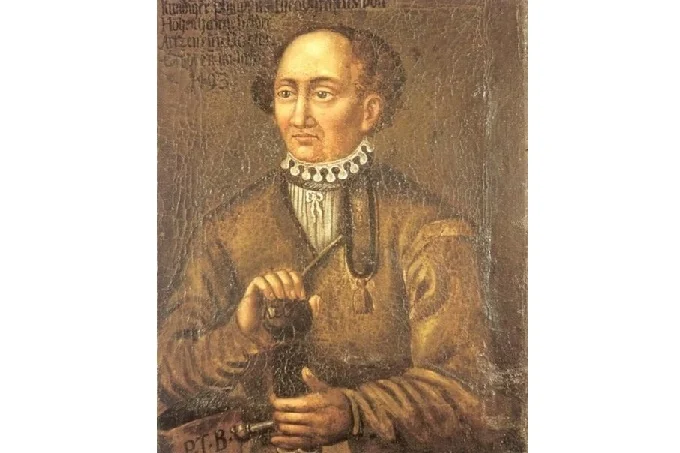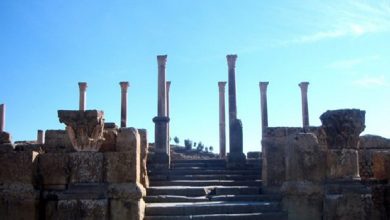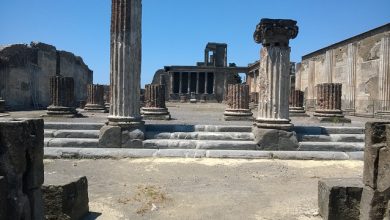What is the Paracelsus famous for?

Paracelsus (real name Theophrastus Philipp Aureolus Bombast von Hohenheim) (1493 – 1541). His motto was: “Don’t be different if you can’t be yourself.” It is unlikely that we will find in the annals of history a person who can compare with Paracelsus – a doctor, astrologer, anthroposophist, theologian, mystic, and magician.
At a time when science was beginning to divide into many branches, when a confrontation of warring dogmas broke out within the Christian faith, when the earth was about to lose the proud title of the center of the universe – in short, in an era when the old unified picture of the world was collapsing – Paracelsus achieved the impossible: he connected theoretical knowledge, practice, and faith together. In pursuit of this magical ideal, he demonstrated his rootedness in the traditions of the outgoing Middle Ages – an era when such a unification of all areas of human thought was still permissible. But Paracelsus boldly countered this craving for the past with innovative empiricism. By publicly burning Galen’s works and pointing out the complete helplessness of his fellow doctors with this symbolic gesture, he made it clear that his own world would be united by completely different means than those offered by tradition. Paracelsus wanted to understand the true nature of things through real scientific research, and not by studying ancient dusty volumes.
These bold views predetermined his critical attitude towards the ancient authorities, for which the past held on with unshakable and blind faith. Paracelsus was convinced that the highest authority is nature itself, because nature, unlike man, does not make mistakes. Everything in nature participates in the work of Machina Mundi, a world mechanism designed according to the divine plan. All the various forms and phenomena of the material world have a deep meaning, and they are all manifestations of the deity.
Paracelsus says: the best doctor for man is God, the creator of health, because the body does not exist by itself, but as the dwelling of the soul. Therefore, the body and soul should be treated at the same time and try to bring them into harmony, which can only be considered genuine health. When inner harmony reigns in a person, the worldly principle in him harmoniously combines with the divine. The word “religion” itself goes back to the Latin “re-ligare” – “to bind anew.” The same can be said about the treatment process. Religion is the basis of medicine. Paracelsus predicts misfortunes to people who are unable to know themselves. After all, such people cannot comprehend their true nature, given to them by God, but only harmony with their true self allows a person to lead a correct and healthy lifestyle.
It follows that a doctor should also be an astrologer: his duty is to understand the harmony of the heavenly spheres and their influence on earthly life. Moreover, he must be a theologian to be aware of the mental needs of the patient, and an anthropologist to understand his bodily needs. He must be an alchemist in order to comprehend the universal substances present in harmonious proportions in every object and phenomenon of the material world. In addition, he must be aware of the action of the primordial creative forces of the universe, because these forces are universal and inherent in man as well. And finally, a doctor must be a mystic in order to understand that not everything in this world is exhaustively explained by logic (as the ancients showed); so, mysticism is the last link completing the system of Paracelsus.
Paracelsus argues that God, at the creation of the world, endowed things with various qualities – forces that allow them to lead an independent existence. Thus, one should not constantly expect divine intervention: a person is able to act independently, like the stars, which do not need an external impulse to move through the sky. Heavenly bodies affect a person. They are inhabited by ancient gods who radiate mortal light – for everything in the created world is mortal. The source of the immortal divine light perceived by the immortal principle in man is God. These two kinds of light are the essence of everything in the world. An astrologer explores the mortal light of the stars and gains wisdom by reflecting on it. Man is made of stardust; the stars are his elder brothers, from whom intelligence, art, and science originate. All these things are mortal. The astrologer does not investigate Christ, the apostles, and the prophets: this supreme function is performed by the mystic.
Man is susceptible to the radiation of the stars, and the attraction to starlight is sublime in nature but at the same time, mortal. People experienced this attraction before the coming of Christ; they are experiencing it now, and even more than before. During the earthly life of Christ, many astronomers, magicians, and fortune-tellers abandoned their art for the sake of striving for eternal light. Paracelsus reminds us of Dionysus the Areopagite, who renounced astrology in order to follow Saint Paul: Dionysius gave up less for more. In the same way, we should all strive for more, each in accordance with his nature, given to him by the stars.
But, unfortunately, man is blind to his true essence and to the double light contained in him. Having finally broken away from his true nature, he inevitably falls ill, because his body separates from the flow of energy that animates him. Most people are not distinguished by either real piety or true scholarship. “If Christ had descended from heaven, He would not have found anyone whom He could convert to the true faith. If Jupiter had descended to earth from his planet, he would not have found real researchers here: he would have found only schools belonging to which people only repeat the wisdom that their predecessors extracted from the stars. These old schools are dead, and their followers are blind to the mortal light.”
Only a few turn their eyes to the starry sky, from which eternal light pours, directing humanity to new sciences and arts. The planet Venus, for example, dominates music. If musicians were receptive to its light, they would create music more beautiful and sublime than all the melodies of the past, which they still mechanically repeat.
Such poetic reasoning from the mouth of a doctor could not please his colleagues, whose entire science was based on Galen’s natural medicine. Their recipes were complicated and expensive. Their philistine mind was outraged by Paracelsus’ manners, his disregard for clothes, rudeness of speech, and the fact that he preferred to write in German rather than Latin. These good bourgeois felt in him the soul of a tramp. His magical signs and talismans seemed to them to be evidence of heresy. In vain Paracelsus explained that in the physical world all things are interconnected and that the sign of a particular planet engraved on a talisman gives the latter the power of this celestial body; that the metal from which the magic medal is made is also connected with the corresponding planet, and therefore enhances the effectiveness of the talisman; that these magical signs are the imprints of stars on terrestrial objects.
Paracelsus clothed his theories in a concrete form, going back to medieval realism, in which ideas were not abstractions, but entities. This desire to present everything in a visible and tangible form at times forced him to make truly fantastic statements that would make even the most condescending critic smile. For example, he claims that such mythical creatures as fauns and nereids are quite real and that it is possible to make an artificial human homunculus. Taken out of context, these statements really seem meaningless; however, as an integral part of the Paracelsus system, they are quite logical and logical.
But even more importantly, despite all such misconceptions, Paracelsus, with his amazing methods, healed patients as if by magic – and the patients of the judicious followers of Galen died. It was this fact (and not fantastic theories) that turned the scientific world against Paracelsus. He was forced to wander from city to city, finding no shelter anywhere.
Straightforwardness and irritability did not allow him to make concessions, and all that remained for him now was to wander the roads in search of higher wisdom. In his treatises on surgery, Paracelsus lists many countries he visited during his life. “Everywhere,” he writes, “I diligently studied and gained experience in the true medical art, not only from doctors, but also from barbers, women, sorcerers, alchemists, in monasteries, among the common people and among the nobility, and from intelligent and artless people.” He often found simple peasant remedies more effective than the complex medicines of learned doctors. His simple prescriptions worked wonders, and this is not surprising: after all, Paracelsus’ firm conviction in his rightness instilled confidence and optimism in patients. The fear of illness, he used to say, is more dangerous than the disease itself.
Alchemy, which Paracelsus took up in his early youth, led him to the idea of using minerals as medicines. So he laid the foundation for a new science – pharmaceutical chemistry. He successfully treated syphilis with mercury and also recommended guaiac gum, which the Spaniards imported from San Domingo, for this purpose. Paracelsus and his followers radically transformed alchemy. Paracelsus argued that the main task of alchemy is to separate the pure from the impure and improve various types of primary substances.
Everything that nature has created, imperfect be it metal, mineral, or other substance must be improved by the methods of alchemy. Thus hermetic art was freed from attachment to earthly needs. According to Paracelsus, it is possible to produce gold by alchemical methods, but the Physico-chemical procedure does not give very good results. The best gold is obtained through psycho-chemical operations. This idea led from gold prospecting to the idea that the main goal of the experiment was the improvement of man.




